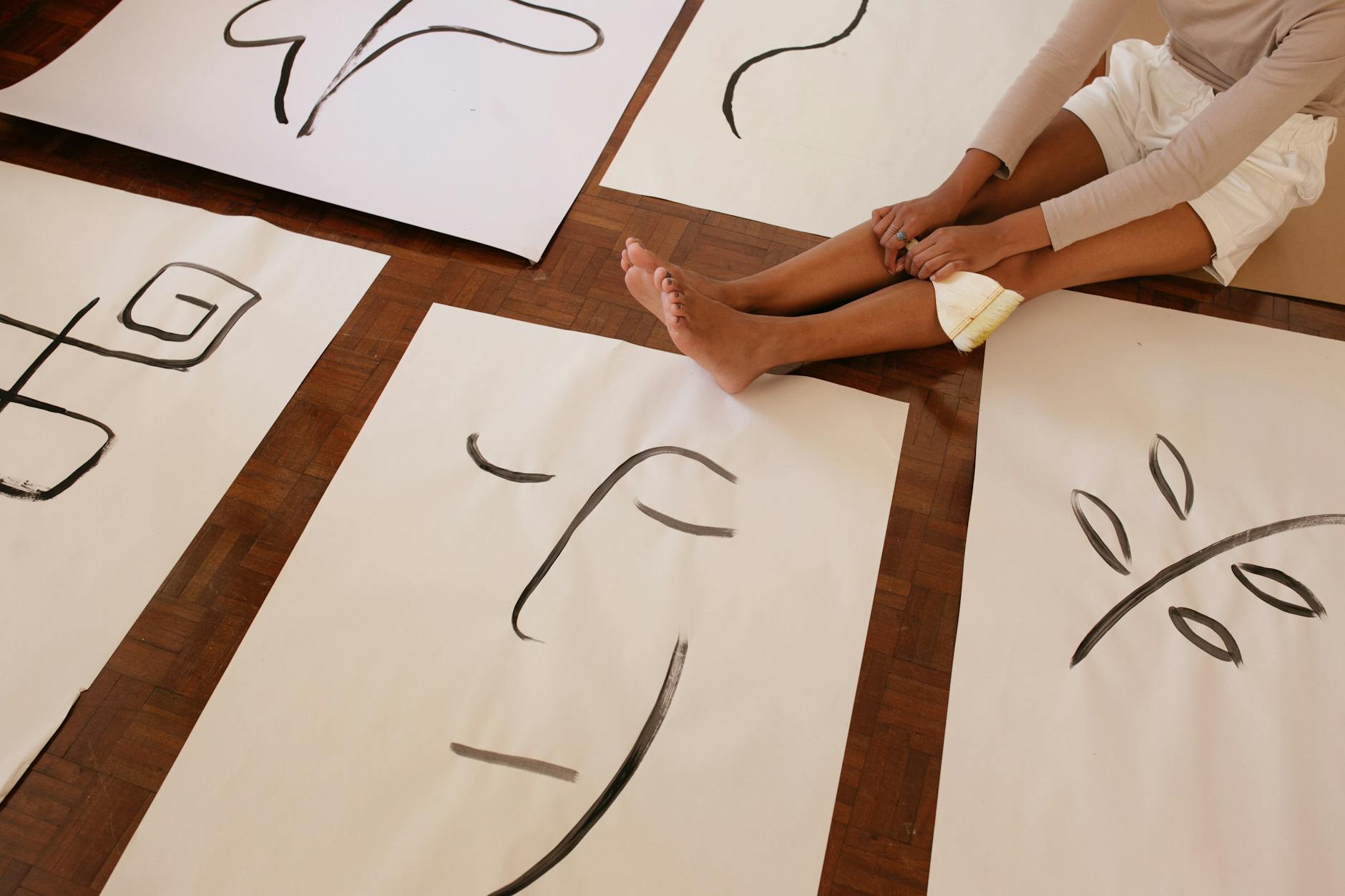Distress tolerance skills are vital tools that can help you navigate through life’s ups and downs. This guide will help you understand these skills, why they’re important, and how to develop them.
- Understanding Distress Tolerance Skills
- Distress Tolerance Skills: Mindfulness Techniques
- The Ultimate Guide to Distress Tolerance Skills: Emotional Regulation
- The Ultimate Guide to Distress Tolerance Skills: Cognitive Techniques
- Behavioural Strategies for Distress Tolerance
- Building Resilience in Challenging Situations
- Conclusion
When life gets tough, your ability to tolerate distress can make the difference between feeling overwhelmed and maintaining your cool. Building resilience in challenging situations is not only possible but necessary for your mental and emotional health.
This ultimate guide will provide you with practical strategies and techniques to improve your distress tolerance skills. By the end of it, you’ll be better equipped to handle difficult situations, reduce your overall stress levels, and lead a happier, more balanced life.
Whether you’re a seasoned professional in the mental health field or someone who’s just beginning to explore the concept of distress tolerance, this guide is for you. So, let’s dive in and start building resilience today.
Understanding Distress Tolerance Skills
Distress tolerance skills are an essential component of building resilience in challenging situations. They refer to the ability to effectively cope with and tolerate distressing emotions, thoughts, and sensations. These skills play a crucial role in helping individuals navigate through difficult circumstances and maintain emotional well-being.

Why are Distress Tolerance Skills Important?
Distress tolerance skills are important because they enable individuals to effectively manage and regulate their emotions during times of distress. Life is full of ups and downs, and everyone encounters challenging situations at some point. By developing these skills, individuals can learn to tolerate and cope with distressing experiences without resorting to harmful or unproductive behaviours.

How Distress Tolerance Helps Build Executive Function
Distress tolerance skills play a significant role in building executive function, which refers to the cognitive processes responsible for planning, problem-solving, and decision-making. When faced with distress, individuals often experience heightened emotions that can interfere with their ability to think clearly and make rational choices.
By developing distress tolerance skills, individuals can better regulate their emotions, allowing them to think more clearly and make sound decisions even in challenging situations. This enhances their executive function and enables them to effectively navigate through various obstacles and setbacks.

Overall, understanding distress tolerance skills is crucial for building resilience and successfully navigating through challenging situations. By developing these skills, individuals can effectively manage distress, maintain emotional well-being, and enhance their executive function.
Distress Tolerance Skills: Mindfulness Techniques
In this section, we will explore the importance of mindfulness techniques for distress tolerance. Mindfulness is a powerful tool that can help individuals navigate difficult emotions and build resilience. By practising mindfulness meditation and grounding techniques, you can develop the skills needed to effectively manage distressing situations.
Practising Mindfulness Meditation

Mindfulness meditation is a technique that involves bringing your attention to the present moment without judgment. It allows you to observe your thoughts and feelings without getting caught up in them. By practicing mindfulness meditation regularly, you can train your mind to stay focused and calm even in the face of distress.
Begin by finding a quiet and comfortable space where you won’t be disturbed. Sit or lie down in a relaxed position, and gently close your eyes. Take a few deep breaths, allowing yourself to settle into the present moment.
Focus your attention on your breath, feeling the sensation of the air entering and leaving your body. If your mind starts to wander, gently bring your attention back to your breath without judgment. Notice any thoughts or sensations that arise, and let them pass without getting entangled in them.
Practising mindfulness meditation for just a few minutes each day can gradually increase your distress tolerance and help you develop a greater sense of calm and clarity.
Follow me on Insight Timer to listen to some of my Queen meditation or Permission to Recharge
Grounding Techniques for Distress Tolerance
Grounding techniques are another effective way to manage distressing emotions and stay present in the moment. These techniques involve connecting with your senses and the physical world around you to anchor yourself during challenging situations.

One simple grounding technique is the 5-4-3-2-1 exercise. Start by identifying five things you can see around you, such as objects in the room or nature outside. Then, identify four things you can touch, such as the texture of your clothing or the feeling of the ground beneath your feet.
Next, focus on three things you can hear, whether it’s the sound of birds chirping or the hum of traffic. Then, identify two things you can smell, such as the scent of flowers or the aroma of a cup of tea.
Finally, focus on one thing you can taste, whether it’s a sip of water or a piece of fruit. By engaging your senses in this way, you can bring yourself back to the present moment and ground yourself in reality.
By incorporating mindfulness meditation and grounding techniques into your distress tolerance toolkit, you can enhance your ability to cope with challenging situations and build resilience in the face of adversity.
The Ultimate Guide to Distress Tolerance Skills: Emotional Regulation
In this section, we will explore effective emotional regulation strategies that can help you navigate challenging situations and build resilience. Emotional regulation is the process of recognizing, understanding, and managing our emotions in a healthy and constructive way. By developing these skills, you can enhance your ability to cope with intense emotions and maintain emotional well-being.
Identifying and Labeling Emotions
Before we can effectively regulate our emotions, it is important to first identify and label them. This step involves acknowledging and naming our feelings, which can bring clarity and understanding to our emotional experiences.
One useful technique for identifying and labeling emotions is the emotion wheel. This tool categorizes emotions into broader categories and provides specific examples within each category. By referring to the emotion wheel, you can pinpoint the exact emotions you are experiencing and gain a deeper insight into your emotional state.
Another helpful strategy is journaling. Take a few minutes each day to write down your emotions and the situations that triggered them. This practice can help you become more aware of your emotional patterns and provide valuable information for developing effective coping strategies.
Coping with Intense Emotions
When faced with intense emotions, it is essential to have effective coping strategies in place. These strategies can help you regulate your emotions and prevent them from overwhelming you. Here are some techniques you can try:
- 1. Deep Breathing: Taking slow, deep breaths can help activate your body’s relaxation response and calm your mind.
- 2. Grounding Techniques: Engage your senses by focusing on your surroundings. Notice the sights, sounds, smells, and textures around you to bring yourself back to the present moment.
- 3. Self-Soothing: Engage in activities that bring you comfort and relaxation, such as taking a warm bath, listening to soothing music, or practising mindfulness.
- 4. Cognitive Reframing: Challenge negative thoughts and reframe them in a more positive and realistic light. This can help shift your perspective and reduce emotional distress.
- 5. Seeking Support: Reach out to trusted friends, family members, or professionals who can provide a listening ear and offer guidance during difficult times.
Remember, coping with intense emotions takes practice and patience. Find the strategies that work best for you and integrate them into your daily routine. Over time, you will develop greater emotional resilience and the ability to navigate challenging situations with confidence.
The Ultimate Guide to Distress Tolerance Skills: Cognitive Techniques
In this section, we will explore cognitive techniques for distress tolerance, which can help individuals effectively navigate and overcome challenging situations. By mastering these techniques, you can develop the ability to manage distressing thoughts and emotions, build resilience, and improve your overall well-being.
Challenging Negative Thoughts

Negative thoughts often contribute to increased distress and can hinder your ability to cope with challenging situations. Challenging these negative thoughts is a crucial step in distress tolerance. By questioning the accuracy and validity of negative thoughts, you can gain a more balanced perspective.
Start by identifying negative thoughts that arise during distressing situations. Then, ask yourself:
- Is there evidence to support this thought?
- Are there alternative explanations or interpretations?
- How would someone else view this situation?
By engaging in this process of cognitive restructuring, you can challenge and reframe negative thoughts, replacing them with more realistic and positive ones. This can help reduce distress and enhance your ability to cope effectively.
Reframing Perspectives

Reframing perspectives involves shifting your mindset and looking at challenging situations from a different angle. By reframing your perspective, you can change the way you perceive and respond to distressing events.
One effective technique is to ask yourself:
- What is the opportunity for growth or learning in this situation?
- How can I view this challenge as an opportunity to develop new skills?
- What are the potential positive outcomes that may arise from this experience?
By reframing the situation in a more positive and growth-oriented light, you can reduce distress and cultivate a sense of empowerment. This shift in perspective can help you approach challenging situations with resilience and open-mindedness.
By incorporating these cognitive techniques into your distress tolerance toolkit, you can develop a more resilient mindset and enhance your ability to navigate and overcome challenging situations. Remember, it takes practice and patience to master these skills, but the benefits are well worth the effort.
Behavioural Strategies for Distress Tolerance
Distress tolerance skills are essential for building resilience in challenging situations. By employing effective behavioural strategies, individuals can better manage and navigate distressing emotions. In this section, we will explore two important behavioral strategies for distress tolerance: engaging in self-care activities and using distracting activities.
Engaging in Self-Care Activities
Self-care activities play a crucial role in distress tolerance. They help individuals create a sense of calm and well-being, promoting emotional regulation. Here are some self-care activities to consider:
- Practicing mindfulness: Engage in activities that help you stay present in the moment, such as meditation or deep breathing exercises. Mindfulness can help you observe and accept distressing emotions without judgment.
- Engaging in physical exercise: Physical activity releases endorphins, which are natural mood boosters. Whether it’s going for a walk, practising yoga, or participating in your favourite sport, engaging in regular exercise can significantly reduce distress.
- Engaging in hobbies: Pursuing activities you enjoy, such as painting, playing a musical instrument, or gardening, can provide a sense of accomplishment and distraction from distressing emotions.
- Spending time in nature: Connecting with nature can have a soothing effect on the mind and body. Take a walk in the park, go hiking, or simply sit outside and appreciate the natural environment.
Remember, self-care activities should be personalized to your preferences and needs. Experiment with different activities to find what works best for you.
Using Distracting Activities
Distracting activities can be helpful when distressing emotions become overwhelming. These activities redirect your attention to something positive or neutral, providing temporary relief. Here are some effective strategies for distraction:
- Engaging in a favourite hobby: Whether it’s reading a book, watching a movie, or playing a video game, immersing yourself in an enjoyable activity can divert your focus away from distress.
- Listening to music: Music has the power to influence our emotions. Create a playlist of uplifting or calming songs that can aid in shifting your focus and reducing distress.
- Learning something new: Engage in activities that require concentration and learning, such as solving puzzles, learning a musical instrument, or trying out a new recipe. These activities can help divert your mind from distressing thoughts.
- Connecting with others: Reach out to friends or loved ones for a chat, whether in person or through a phone call. Social interactions can provide a welcome distraction and emotional support.
Remember, distracting activities should be healthy and constructive. Avoid using unhealthy coping mechanisms, such as excessive alcohol consumption or substance abuse, as they can worsen distress in the long run.
By incorporating self-care activities and utilizing distracting activities, individuals can enhance their distress tolerance skills and build resilience in the face of challenging situations. Experiment with different strategies and find what works best for you. The Ultimate Guide to Distress Tolerance Skills: Building Resilience in Challenging Situations
Building Resilience in Challenging Situations
Resilience is the ability to bounce back from difficult situations and adapt to change. It is an essential skill to have, especially when facing challenging circumstances. In this section, we will explore two key strategies for building resilience: cultivating positive coping mechanisms and seeking support from others.
Cultivating Positive Coping Mechanisms
In times of distress, it is crucial to develop healthy coping mechanisms that can help you navigate through challenging situations. Here are some effective ways to cultivate positive coping mechanisms:
- Practice self-care: Take care of your physical, emotional, and mental well-being. Engage in activities that bring you joy and help you relax, such as exercising, meditating, or pursuing hobbies.
- Focus on the present moment: Practice mindfulness to stay grounded in the present. Pay attention to your thoughts and feelings without judgment, allowing yourself to process and let go of negative emotions.
- Challenge negative thinking: Replace negative thoughts with positive and realistic ones. Reframe challenging situations as opportunities for growth and learning.
- Set achievable goals: Break down overwhelming tasks into smaller, manageable goals. Celebrate your progress along the way to boost your confidence and motivation.
Seeking Support from Others
Building resilience is not a journey you have to undertake alone. Seeking support from others can provide valuable perspectives, encouragement, and validation. Here’s how you can reach out for support:
- Build a support network: Surround yourself with positive and supportive individuals who can offer guidance and empathy. This can include friends, family, mentors, or support groups.
- Communicate your needs: Express your feelings and concerns to trusted individuals. Be open about what kind of support you require, whether it’s a listening ear, advice, or practical assistance.
- Attend therapy or counseling: Seeking professional help can provide you with specialized guidance and strategies to build resilience. Therapists or counselors can assist you in developing coping skills tailored to your unique circumstances.
Remember, building resilience takes time and effort. By cultivating positive coping mechanisms and seeking support from others, you can enhance your ability to navigate challenging situations and emerge stronger than before.
Conclusion
Building resilience in challenging situations is essential for maintaining emotional well-being and navigating through life’s difficulties. The ultimate guide to distress tolerance skills has provided valuable insights and practical strategies to help individuals develop their resilience. By implementing these skills, such as self-soothing, distraction techniques, and radical acceptance, individuals can effectively manage distress and build resilience. Remember, practising these skills may take time and effort, but the long-term benefits are worth it. So, take the time to invest in yourself and develop the necessary tools to face life’s challenges head-on. With the right skills and mindset, you can overcome adversity and cultivate a resilient spirit.









